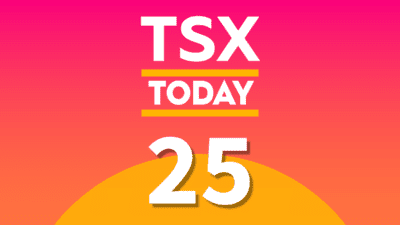All hail the king of retail: Dollarama (TSX:DOL).
After a brief hiatus and stock retreat earlier this year, the dollar store chain returned to its norm of strong sales and growth earlier this month by posting positive results for the third fiscal of 2020.
Let’s take a closer look at those results and explore why Dollarama is such a good investment.
Q3 results: Dollarama is still on top
In the most recent quarterly update, Dollarama reported sales of $947.6 million, reflecting an impressive 9.6% increase over the $864.3 million posted in the same period last year. Comparable store sales saw an equally impressive 5.3% gain over the 3.1% growth witnessed in the same quarter last year.
EBITDA witnessed a 4.3% gain in the quarter over the same quarter last year, while the company also managed to open 21 net new stores in the quarter. Dollarama’s earnings amounted to $138.6 million, or $0.44 per diluted share, in the most recent quarter, compared with earnings of $132.1 million, or $0.40 per diluted share, in the same quarter last year.
One reason attributed to the growing sales number was the 21 net new stores that Dollarama opened in the recent quarter. As of the end of the quarter, Dollarama had 1,271 stores, with a goal of opening up to 70 new stores by the end of the fiscal. Longer term, Dollarama is forecasting to have 1,700 locations open across Canada by 2027.
Here’s why Dollarama is a key investment for 2020
Market pundits continue to embrace the idea that some form of a market slowdown is coming in 2020. If that slowdown does make an appearance, having one or more defensive investments is recommended, and this is where a Dollarama investment makes sense.
The dollar store model is based almost entirely on the premise that consumers will seek out better deals for everyday items. During a market slowdown, consumers seek out less-costly means of purchasing those goods. Dollarama’s attractive fixed price points and product bundling takes that prevalent find-a-deal mentality and dials it up a notch even further.
That growth model has worked incredibly for Dollarama so far. It seems fitting that on the final day of this decade, we take a look back at how Dollarama’s size and pricing model has evolved. Back then, Dollarama’s network of stores was just over 650, and the company had just added the $2 fixed price point.
Looking to the future, Canada isn’t the only focus of Dollarama’s growth. While the Canadian market isn’t anywhere near the saturation level of the U.S. dollar store market, Dollarama has set its sights further south to Latin America. Following a multi-year agreement to provide support to Latin American chain Dollar City, Dollarama moved earlier this year to acquire the chain outright and is now applying that same fixed price winning formula to those markets.
What should you do?
Dollarama is not without risk. While sales numbers continue to increase, the numbers are given an initial boost through Dollarama’s newly opened stores. Dollarama also continues to innovate through a number of initiatives that took off in the past year. Two notable examples of this include finally accepting credit cards in stores for payments and then launching an online sales portal for larger bulk orders.
Investors can expect Dollarama’s sales numbers to continue inching further upwards in 2020, just not at the same pace that investors have come to expect in the past decade.
In my opinion, Dollarama remains a good investment to complement an existing portfolio but should no longer be your primary growth driver.







